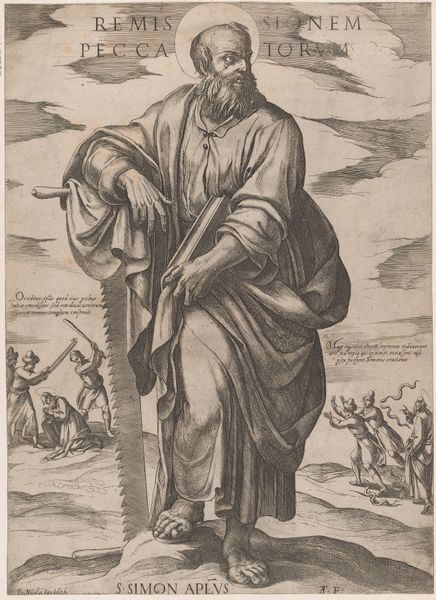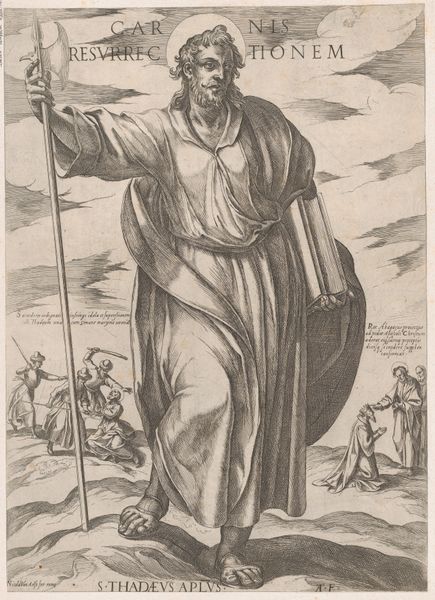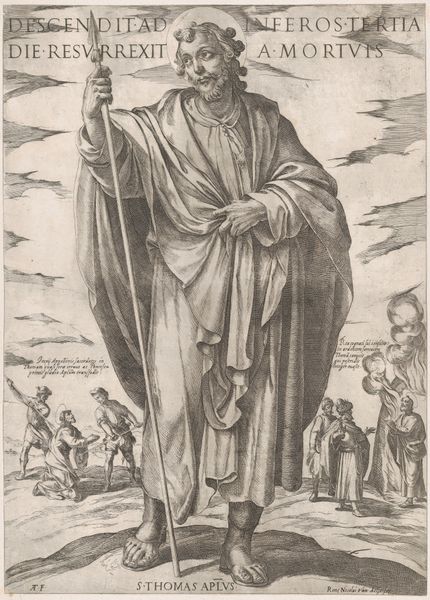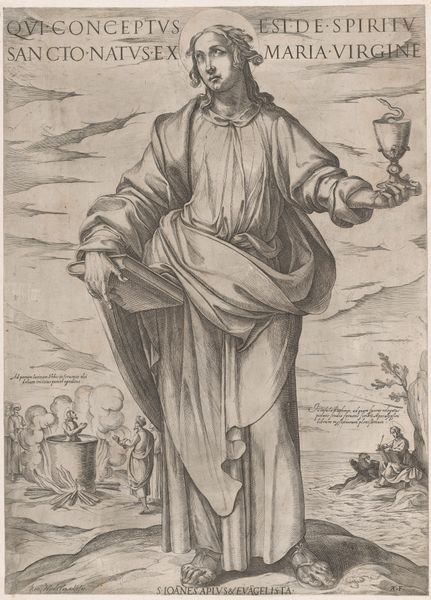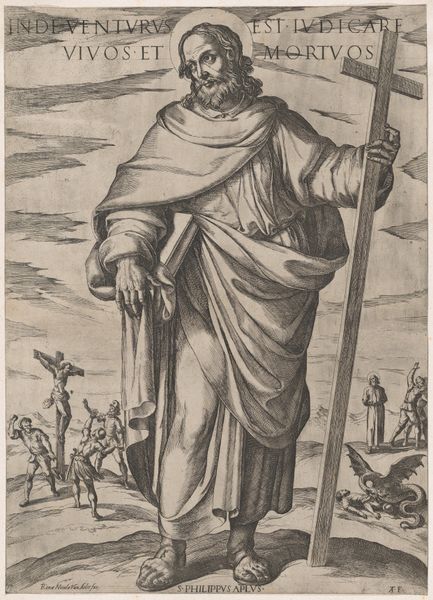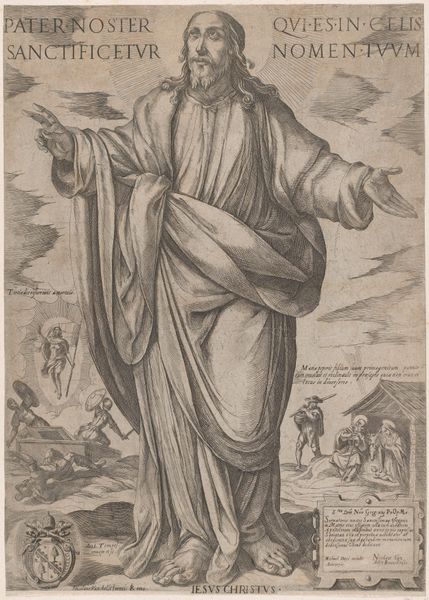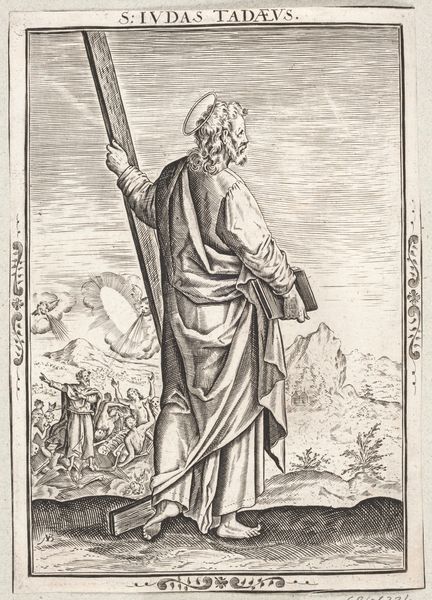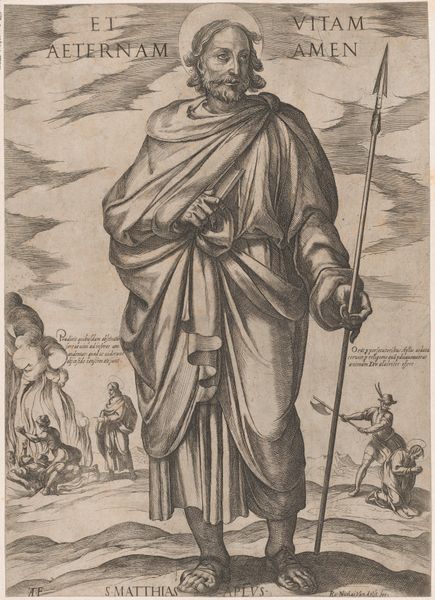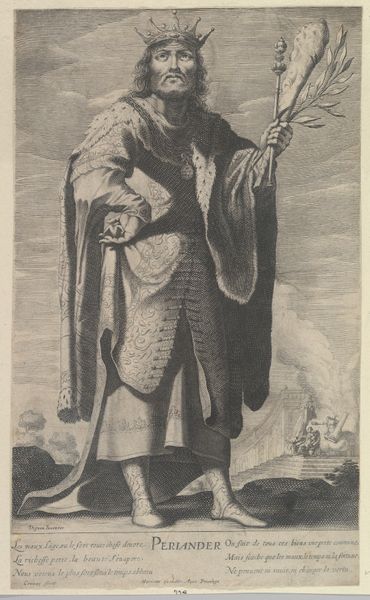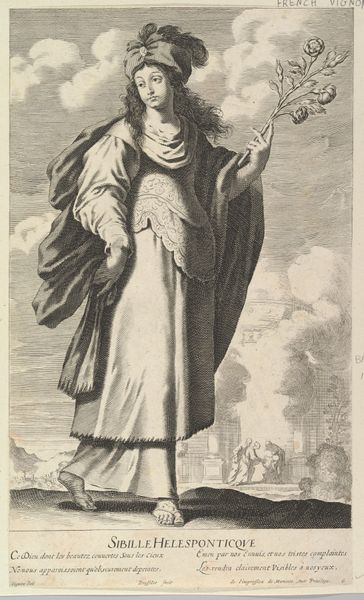
St. James Minor, from 'Christ, Mary and the Apostles' 1585 - 1615
0:00
0:00
drawing, print, engraving
#
portrait
#
drawing
#
baroque
# print
#
figuration
#
pencil drawing
#
men
#
portrait drawing
#
history-painting
#
engraving
Dimensions: Sheet: 20 1/2 × 14 15/16 in. (52 × 38 cm)
Copyright: Public Domain
Curator: Here we have Antonio Tempesta's "St. James Minor, from 'Christ, Mary and the Apostles'," dating from 1585 to 1615. It's an engraving. Editor: It's amazing to see the level of detail achievable in printmaking during this period. What I find intriguing is how this artwork, crafted through reproducible means, tackles notions of divine and religious iconography. How do you interpret this work, considering its medium and production context? Curator: Considering this is an engraving, let's examine the social implications. How does making religious imagery widely accessible through prints affect the power dynamics between the church, the artists, and the common person consuming this image? Note the layering of figures, almost like an assembly line – what's the labor process inherent in the multiple stages required to produce engravings such as this? Editor: The thought of considering the physical labour involved in creating a printing plate completely changes the perspective. Does the fact that prints could be sold change how artists are approaching religious figures? Curator: Precisely. Religious images are being produced as commodities. Did that change the nature of religious devotion, making it more personal and individualized, or did it simply reinforce existing structures of power? How does the image reflect the complex material culture of the period? The cost of materials, the distribution networks – all become part of the reading of St. James himself. Editor: So we can almost trace back how the commercial aspect relates to cultural influence through the material process? It really opens a different approach than simply examining it for the narrative elements. Curator: Absolutely. Considering how it was made, how it was circulated, and who had access – these factors dramatically alter our understanding. The Baroque style might even be linked to a need for dramatic, mass-produced imagery to engage a wider audience, driven by market forces. Editor: That's fascinating. Considering art from that lens allows for a new and rich way of understanding the intentions of a piece. Curator: It gives value to the craft and work behind an artwork rather than just the artist’s intent.
Comments
No comments
Be the first to comment and join the conversation on the ultimate creative platform.
